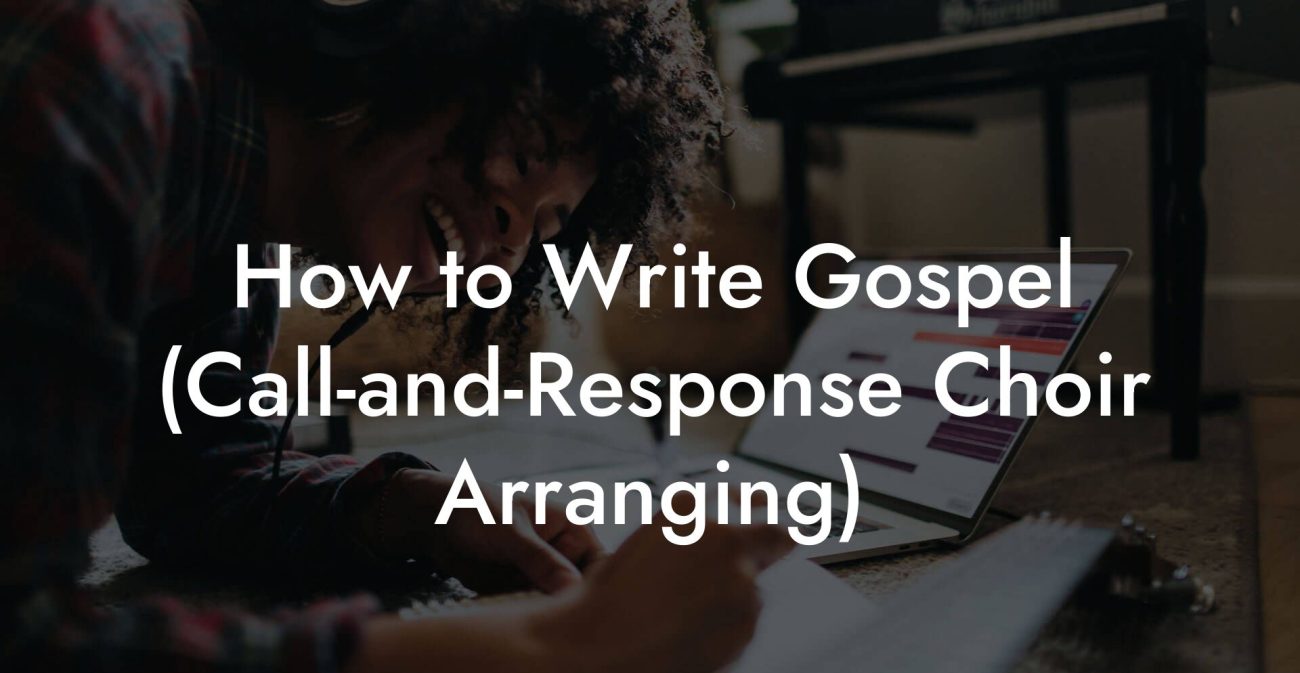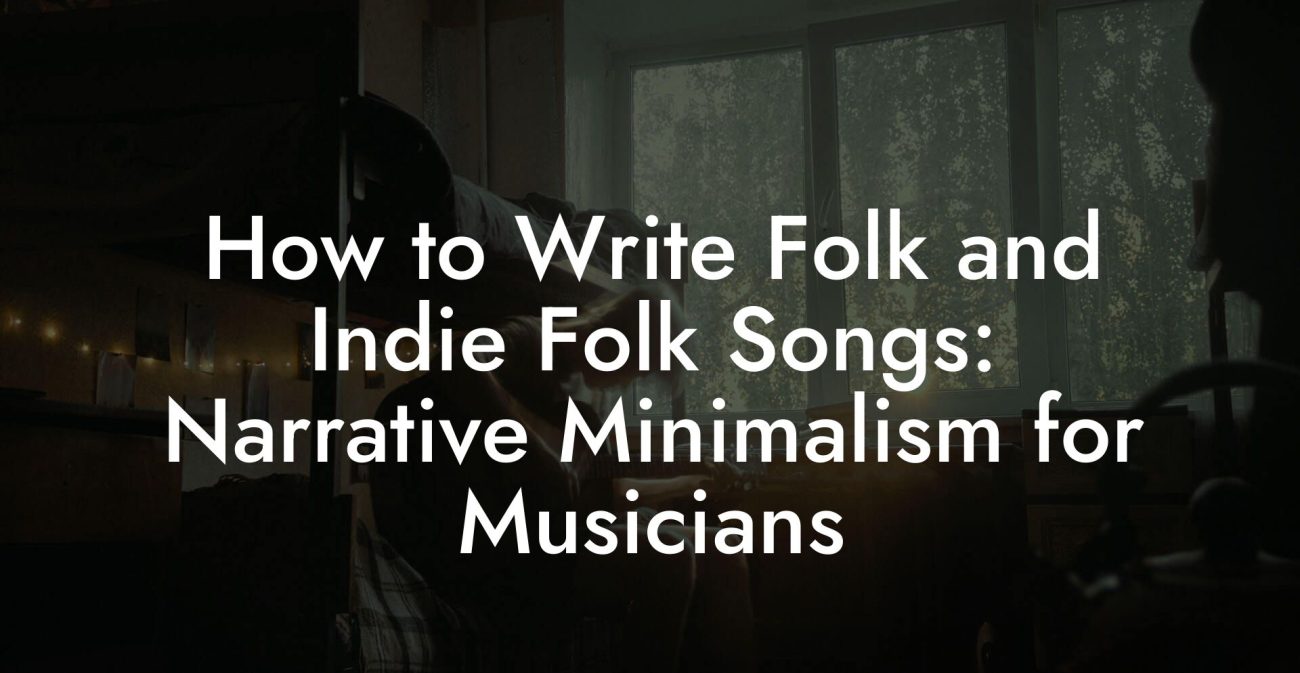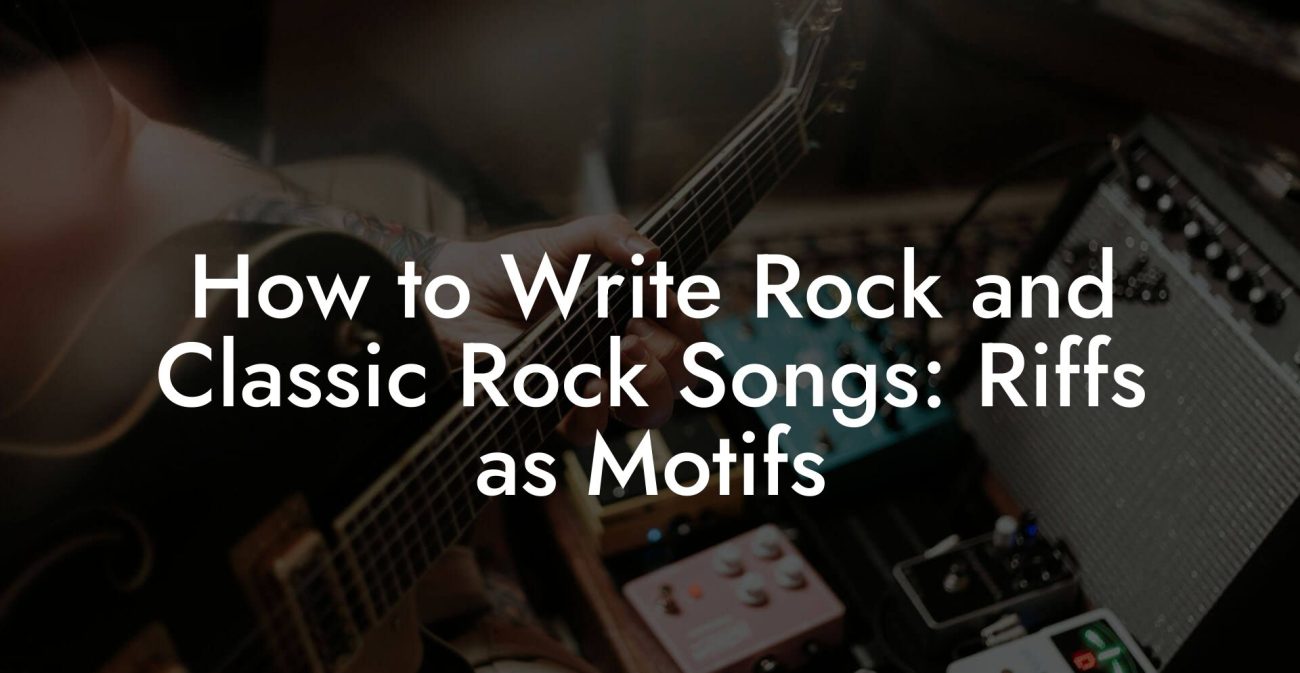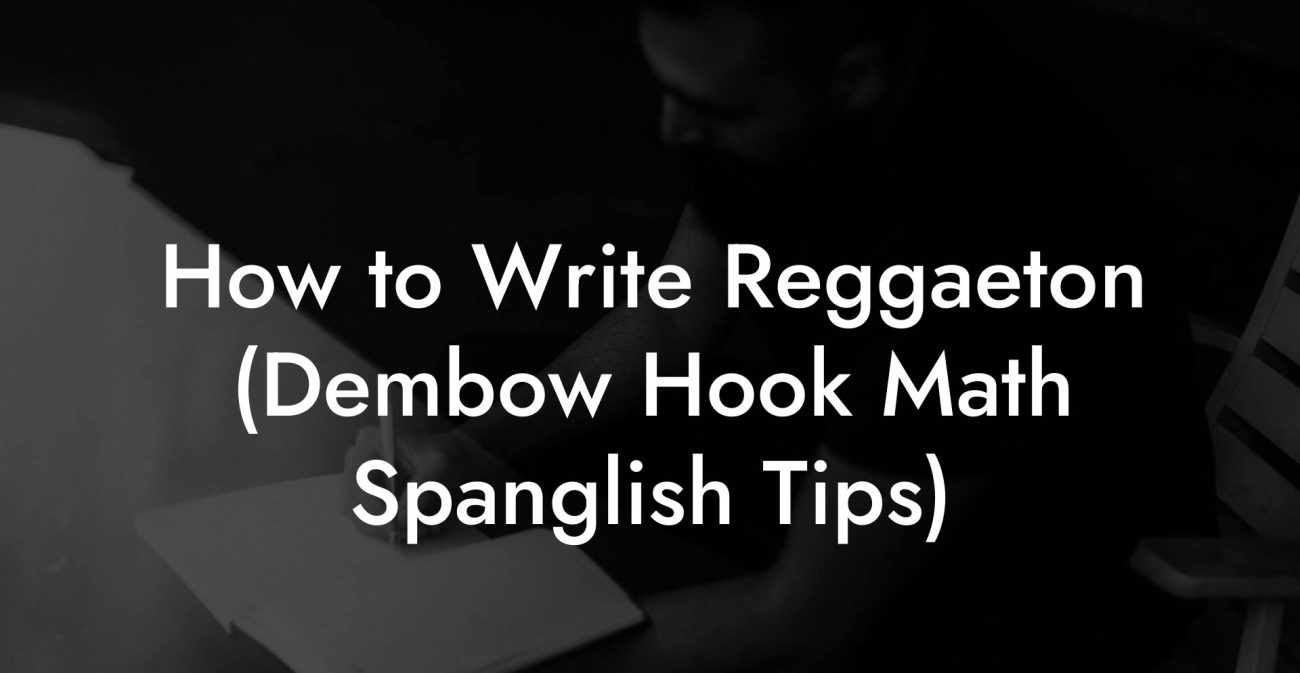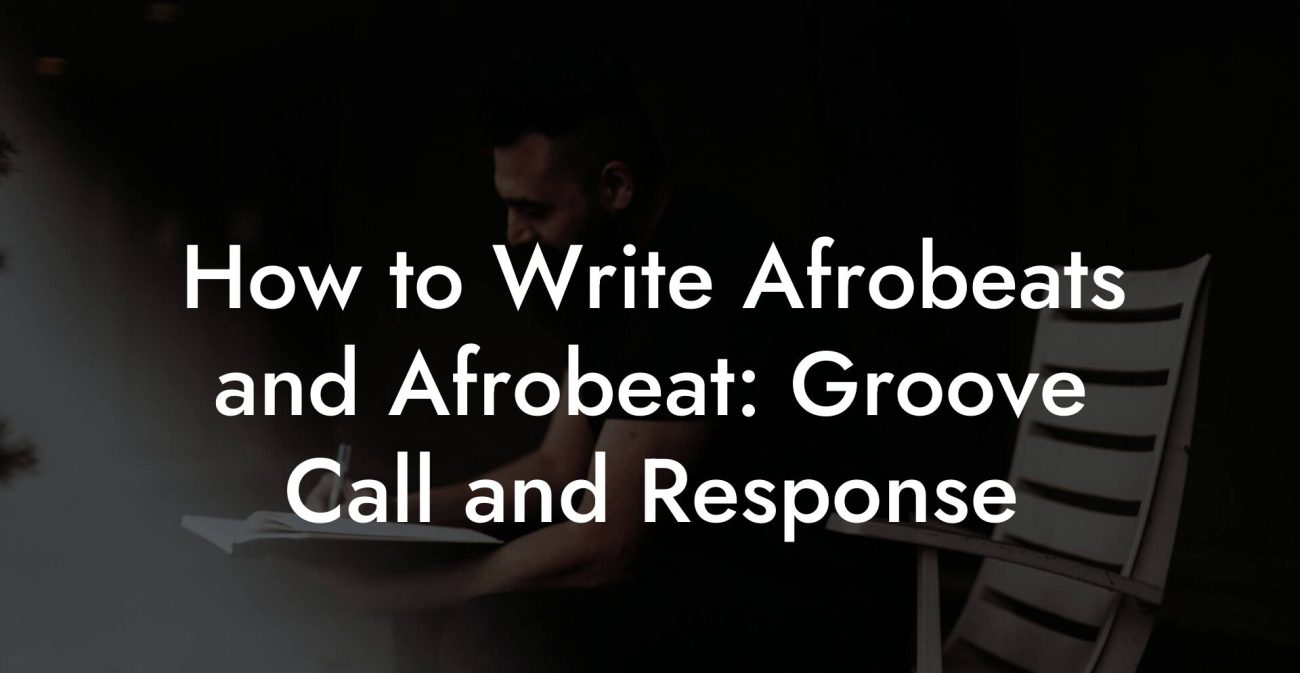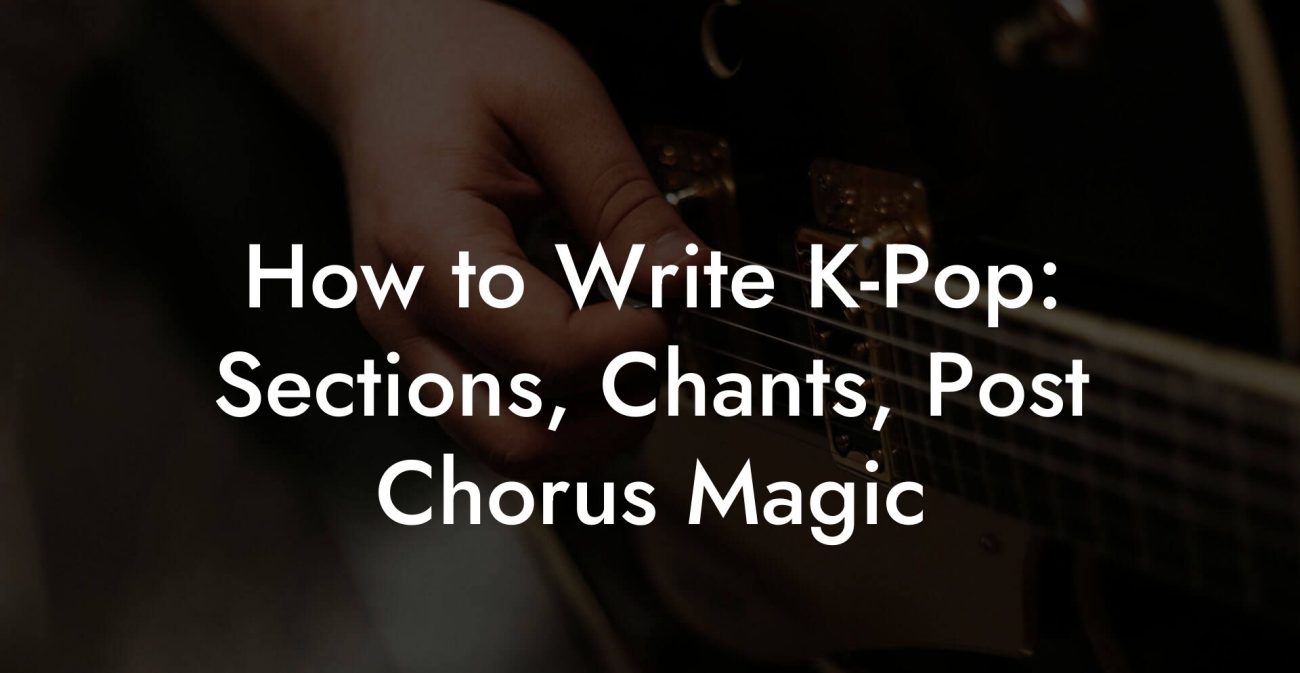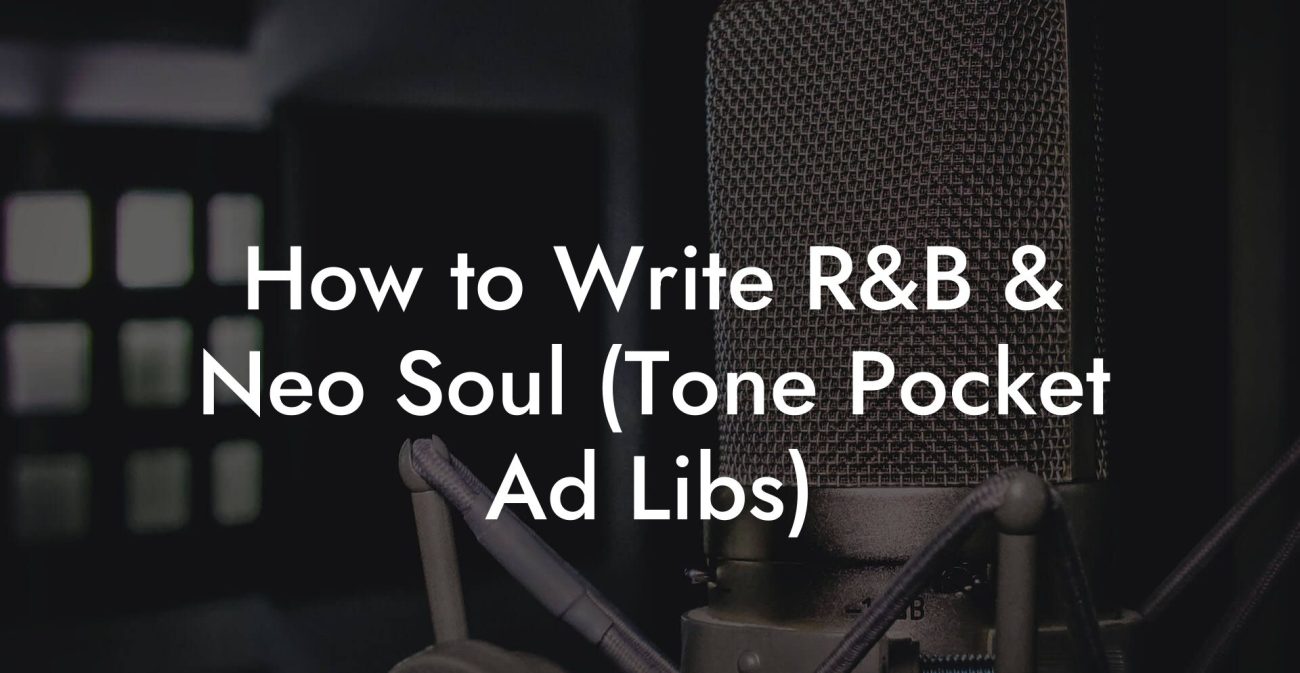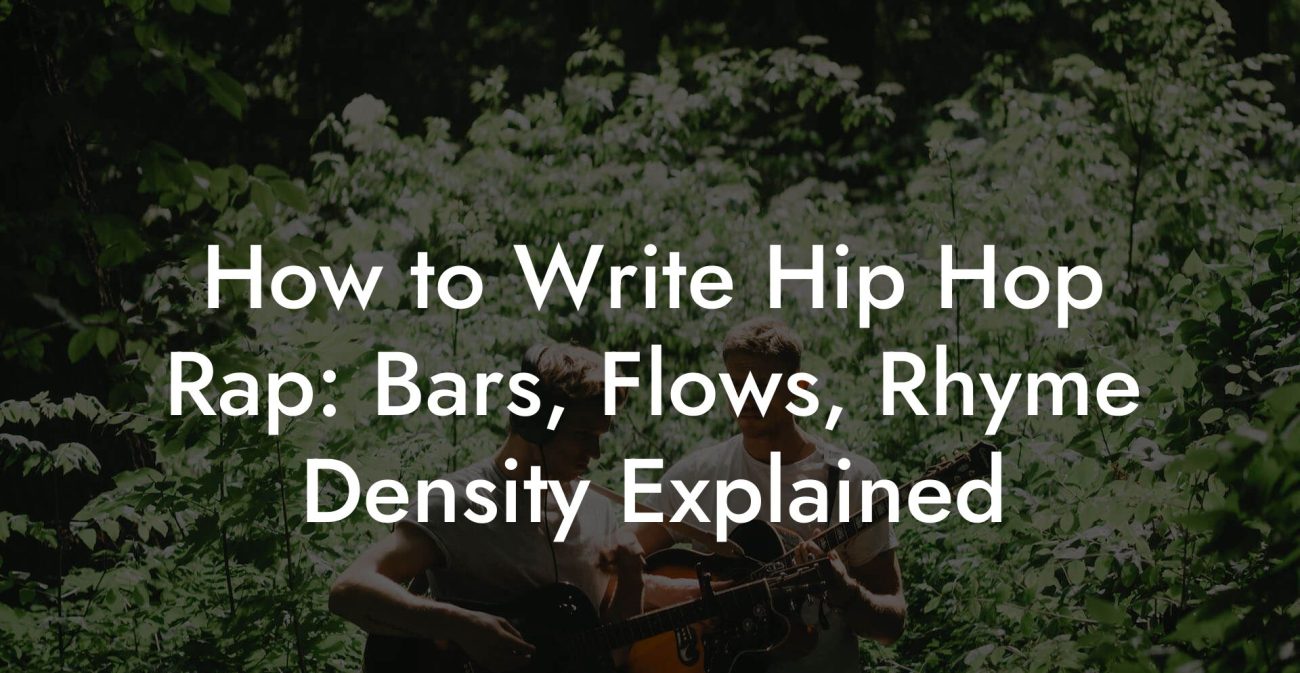Songwriting Advice
How to Write Blues (12 Bar Feel Turnarounds)
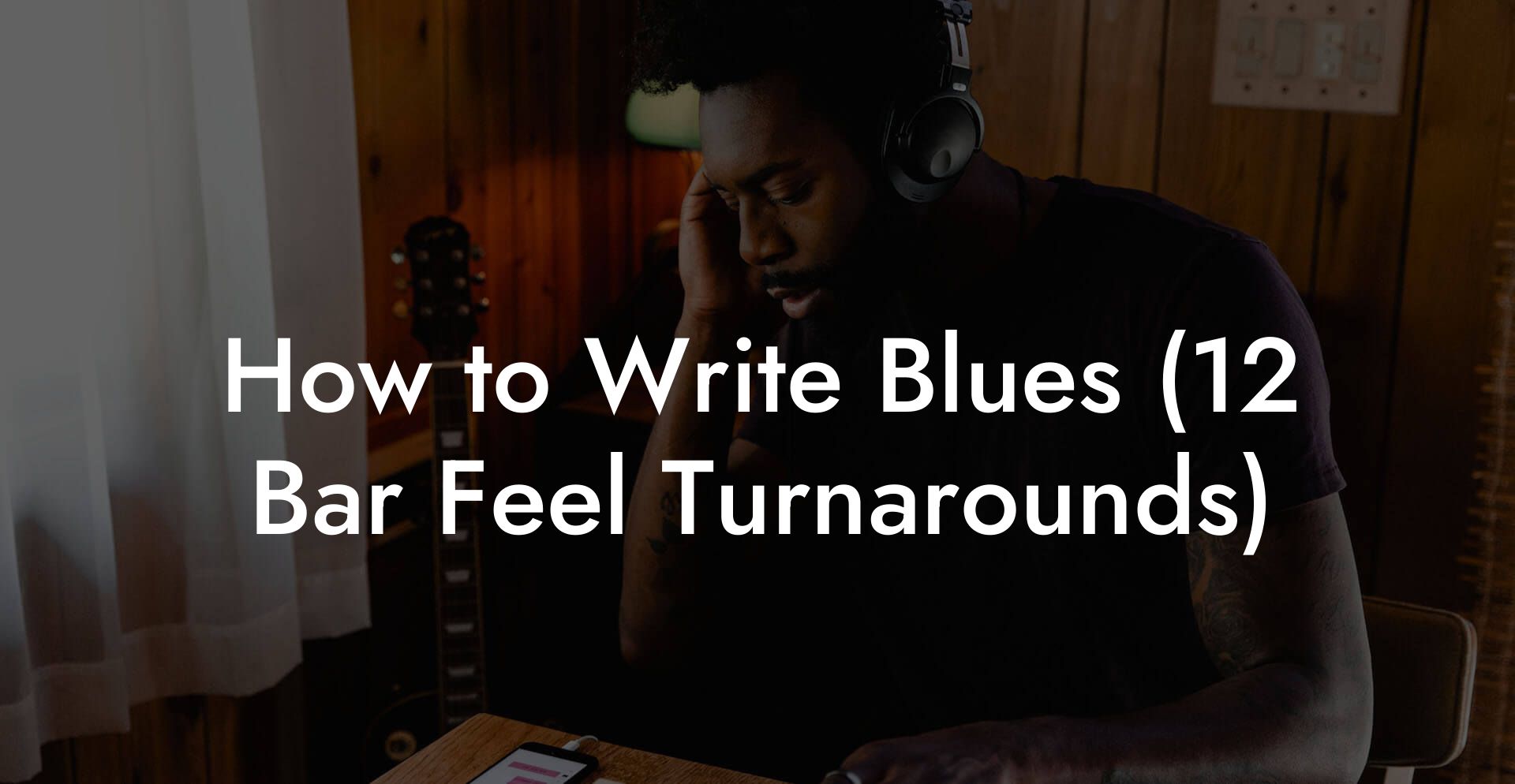
You want something raw and honest that hits the gut first and the head second. You want a groove people nod along to and a turnaround that tells the band where to go next without using words. Blues is straightforward and complicated at the same time. It is built from tiny rules that allow huge expression. This guide gives you those rules with real examples, hands on exercises, and idiot proof ways to write 12 bar blues that sound like they have lived a life.
Quick Interruption: Ever wondered how huge artists end up fighting for their own songs? The answer is in the fine print. Learn the lines that protect you. Own your masters. Keep royalties. Keep playing shows without moving back in with Mom. Find out more →
Quick Links to Useful Sections
- Why 12 bar blues still matters
- Basic anatomy of a 12 bar blues
- Common keys and why they matter
- What is a turnaround and why you need one
- Blues terminology explained with real life scenarios
- I, IV, V
- Dominant seventh
- Blues scale
- Shuffle feel and straight eighths
- First playable 12 bar blues in E
- Turnaround options you can steal
- 1. The basic dominant walk
- 2. The I to VI diminished trick
- 3. The quick IV back to I
- 4. The minor twist
- 5. The chromatic descending bass
- Melody and lyric approach for blues
- Riffs and hooks that stick
- Soloing basics for blues players
- Chord substitutions and colors
- How to write a whole blues song in three hours
- Recording and production tips that keep the blues alive
- Common blues writing mistakes and how to fix them
- Too many words
- Chorus that is not a chorus
- No dynamic range
- Turnaround confusion
- Exercises to lock the 12 bar feel
- Examples you can steal and personalize
- Sketch one in A, classic shuffle
- Sketch two in E, slow minor leaning
- How to make your blues modern without losing soul
- How to use the blues scale in your melodies
- Working with a band in a rehearsal room
- What to do on stage when something breaks
- Song finishing checklist
- Blues songwriting FAQ
Everything here speaks the language of players who want fast results. We will cover the 12 bar structure, feel and groove, turnarounds, dominant seventh function, substitution ideas, lyrical hooks, riff writing, soloing tips, and production ideas. You will get chord charts in common keys, vocal phrasing notes, exercises to lock the feel, and a finish plan to complete a blues song you can play live tonight.
Why 12 bar blues still matters
The 12 bar form is like the blueprint for a good argument. It gives you a clear problem and a clear resolution. The repetition creates space for improvisation. People learn it quickly. Clubs know it. A tight 12 bar song will get you a head nod from a room and a pocket of time for solos. If you want people to clap, stomp, dance, or cry, the 12 bar gives you reliable architecture to do that.
Think of the 12 bar as a friendly fence. It keeps the song on track while leaving the door open for you to wreck it in the best way possible. Want to tack on an extra measure for comedic timing. Do it. Want to trade fours between drums and guitar. Go for it. The fence exists so your chaos has shape.
Basic anatomy of a 12 bar blues
The standard 12 bar progression is built from three chords that in many songs are the first, fourth, and fifth degrees of the scale. Musicians often refer to these as I, IV, and V. That is just a way to say tonic, subdominant, and dominant. The simplest version in a major key looks like this in chord labels.
- Bar 1: I
- Bar 2: I
- Bar 3: I
- Bar 4: I
- Bar 5: IV
- Bar 6: IV
- Bar 7: I
- Bar 8: I
- Bar 9: V
- Bar 10: IV
- Bar 11: I
- Bar 12: V or turnaround
That last bar is where the music either resolves back to the top or uses a turnaround to send the band into the next chorus with style. Turnarounds are short progressions or melodic phrases that signal return. They are the handshake at the end of each 12 bar cycle.
Common keys and why they matter
Some keys are friendlier to instruments and voices. Guitarists love E and A because they sit well with open strings and give fat low end. Harmonica players prefer C, G, and A. Pianists and horn players often pick C or F. Choose a key that fits your vocalist and your instrument. If you write in E and your singer sounds thin, move to A or D until the voice sits comfortably between chest and head range.
What is a turnaround and why you need one
A turnaround is a musical phrase at the end of the 12 bar that leads back to the top. It can be a single chord, a short riff, or a small progression. Turnarounds tell the listener that the chorus is ending and the next one is about to start. In performance, a killer turnaround also gives the soloist a place to add personality and give the drummer a cue to change intensity.
Turnarounds range from a single dominant chord to a moving bass line with chord changes. They can be melodic, rhythmic, or both. The best ones are memorable enough that players in the band can read them by ear after one pass. They do not need to be fancy. They need to be clear and soulful.
Blues terminology explained with real life scenarios
We will unpack a few terms you will see often. Each entry includes a quick real life example so the concept sticks.
I, IV, V
These are scale degree labels. I means the home chord of the song. IV is the chord built on the fourth note of the scale. V is the chord built on the fifth. Think of them as house, neighbor, and mailman. The house is where you start. The neighbor shows tension and movement. The mailman delivers a message that demands resolution.
Dominant seventh
Dominant seventh is a chord type written as 7. It is like a major chord with a small twist that wants to move. In E it would be E7. That wanting to move creates energy. It is the musical version of tapping your foot before you decide to leave a party.
Blues scale
Blues scale is a six note scale built to give you blue notes. In the key of A it is A C D D sharp E G. That D sharp is the blue note. Think of it like a secret spice you add to a sandwich to make it unexpectedly delicious.
Shuffle feel and straight eighths
Shuffle feel means the pair of eighth notes are played with a long short swing instead of even spacing. Straight eighths mean equal spacing. Picture a city bus ride. Shuffle is a slow then quick bump. Straight is steady. Shuffle makes the groove sway. Straight eighths can feel modern or funky depending on the arrangement.
First playable 12 bar blues in E
Start with this simple backing. Use a shuffle feel if you want a classic sound. Use straight eighths if you want a Texas blues or rock leaning vibe. Vocals can speak through the first two bars and then sing the hook in bar three and four if you want a conversational style.
Bars 1 to 4: E7 | E7 | E7 | E7 Bars 5 to 6: A7 | A7 Bars 7 to 8: E7 | E7 Bars 9 to 10: B7 | A7 Bars 11 to 12: E7 | B7 turnaround
That last bar B7 can be a static B7 chord or a melodic riff that walks back to E7. A simple turnaround in bar 12 is a chromatic walk from B7 down to E7 on the first beat of the next cycle. In practice you will hear players playing bass walks or small guitar figures to make that return feel inevitable.
Turnaround options you can steal
Below are five classic turnarounds. Try each with a metronome and a one chord vamp for the top of the form. Record and pick the one that gives you goosebumps.
1. The basic dominant walk
Use a V7 on bar 12 and walk the bass down to I on the next bar. In the key of E that would be B7 then a bass line like B A G sharp to E. Guitar can play a simple double stop or single note riff on top. It is direct and communicates the return clearly.
2. The I to VI diminished trick
Play I7 then move to VI diminished then to II7 then to V7. In the key of C that is C7 then A diminished then D7 then G7. It sounds fancy but is easy to play. The diminished chord functions as a passing color. It is like showing up at the door wearing a tie when you usually do not. It commands attention.
3. The quick IV back to I
Use a short IV7 then a move back to I7 with a snappy rhythmic riff. It gives a call and response feel. In A it is D7 to A7 with an eighth note staccato lick on top. This works well in horn charts and larger ensembles because the horns can lock the riff while the singer breathes.
4. The minor twist
Use a minor iv chord in bar 10 then return to I. For example in E play C minor 7 on bar 10 before resolving to E7. It introduces a moody color. In words it is like discovering a photo you forgot about when cleaning your room. It changes the mood for a second then brings it back home.
5. The chromatic descending bass
Play I7 with a bass line that steps down chromatically for four beats. Guitar can harmonize a third above. This classic blues move sounds like a slow elevator ride down while the singer finishes the line. It is smooth, inevitable, and slightly melancholy.
Melody and lyric approach for blues
Blues lyrics are often conversational, direct, and full of small scenes. Use short lines, repeat for emphasis, and save the twist for the last line of the verse. The A A B lyric form works well. In this format the first line sets the scene. The second line repeats the first with slight change or emphasis. The third line is a response or conclusion that moves the story forward.
Example A A B in plain words
A: My baby left me on a Tuesday morning.
A: She took the key and the record player without warning.
B: So I put my heart in the freezer and I will not thaw it for no one.
Keep language concrete. Use objects and small actions. People relate to toothbrushes, broken coffee mugs, parking tickets, and apartment lights. Those details make a line sing in a room full of strangers.
Riffs and hooks that stick
A great blues riff is small, repeatable, and fits into the space above the chords. It can live in the vocal or be purely instrumental. Use call and response between voice and guitar to make a riff feel like a conversation.
- Pick a two bar motif. Repeat it with a slight change on the second pass.
- Leave space for the vocal to answer the riff. Silence is part of the groove.
- Use open strings on guitar to give the riff a ringing quality.
Example riff in E: use the open E string then play G natural on the third fret of the low E and slide to A on the fifth fret. That small move echoes through the band and becomes a fingerprint for the song.
Soloing basics for blues players
Solos in blues are not about showing off speed. They are about saying something memorable with tone and dynamics. Use space. Use repeated phrases. Build a small motif and then vary it. Here are practical rules.
- Start simple. Play one strong phrase and repeat it with tiny changes.
- Use the blues scale and mix in the major third occasionally for sweetness.
- Listen to the rhythm section. Let the drummer and bassist set the feel.
- Phrase like a singer. Think in sentences with rests for breath.
- End your solo with a turnaround lick that leads back to the vocal or the chorus.
Real life example. Picture Jimmy writing a solo on the bar stool. He plays a four note idea and repeats it four times, each time adding one more note or one more bend. By the last repeat the audience is with him. They can hum the motif. That is the goal.
Chord substitutions and colors
If the standard I IV V feels too plain, you can add colors to taste. Here are safe substitutions.
- Use 9 or 13 extensions like I9 or V13 to thicken a chord without changing its function. These are simply major or dominant chords with extra notes added. They add warmth or grit depending on voicing.
- Try a ii chord before the V. In C that is Dm7 before G7. It creates a smoother turn toward the V.
- Add a flat 9 on the V7 for tension then resolve to I7. That gives a spicy, urgent feeling.
- Use a quick IV minor in bar 10 for a soulful color that listeners pay attention to.
Remember function over novelty. A substitution should serve the form and the lyric. If it only impresses other musicians and confuses the audience, it fails the job.
How to write a whole blues song in three hours
Yes you can. Use the following step list. This is a studio friendly and bar friendly approach that gets to a finished song fast.
- Pick a key that fits the voice. If unsure pick A for guitar players and C for harmonica players.
- Decide the feel. Shuffle for classic, straight eighths for modern or rock.
- Write one strong lyric line that states the problem or the promise. Make it short. That is your title.
- Map the chord progression as standard 12 bar. Decide your turnaround from the list above.
- Create a two bar riff that repeats under the first two lines of the verse. Keep it simple.
- Write two more lines for the A A B structure. Repeat small words for emphasis.
- Play four passes and record a rough demo. Improvise a solo for one chorus. Save your favorite take.
- Polish the arrangement. Add a second guitar part or a subtle organ pad on the chorus. Keep the dynamic variety alive.
Recording and production tips that keep the blues alive
Production should reinforce the rawness not hide it. Keep things warm and immediate. Microphone choices and placement matter more than plug ins. If possible record the rhythm section live to keep feel. Here are practical points.
- Use ribbon or dynamic microphones for guitar to capture gritty tone.
- Record a live room mic to catch natural bleed that makes the track sound human.
- Keep vocals forward and intimate. A little room reverb can make them breathe.
- Do not compress everything into a single wall. Let the drums breathe and hit natural dynamics.
If you are mixing alone, start by setting the drums and bass solid. Then place the guitars in stereo and the vocal in the center. Subtle tape saturation or analog style distortion can glue the track. Avoid over editing solos. Small imperfections are the thing people like about blues.
Common blues writing mistakes and how to fix them
Here are frequent traps and quick repairs so your song does not fall into cliché land.
Too many words
Fix by trimming each line so it reads like a punch. If you can remove a word without losing meaning, remove it. Blues loves economy. Let instruments tell some of the story.
Chorus that is not a chorus
Blues often uses the A A B structure and does not have a sung chorus in the pop sense. If you want a chorus, make it a short riff or chant that repeats. Keep it ear friendly. A chorus can also be a repeated riff behind a vocal line that functions like a title.
No dynamic range
Fix by changing instrumentation between sections. Drop to solo guitar for the bridge. Add a horn stab on the return. Dynamics keep people interested across many choruses.
Turnaround confusion
Fix by simplifying. Play a clear turnaround and repeat it until the band locks it. If everyone is guessing, the audience will feel it. Turnarounds are cues more than ornament.
Exercises to lock the 12 bar feel
Practice these drills. Do them with a metronome or a drum loop. Repeat until they become intuition.
- Shuffle pocket drill. Play E7 in a shuffle at 90 bpm for eight bars. No solos. Focus only on the groove and pocket. Repeat and move to 110 bpm.
- Turnaround vocabulary. Pick three turnarounds. Play each for a full chorus. Record and pick your favorite. Repeat over several keys.
- Phrase repeat. Play a one bar motif. Repeat it for four times and only vary the last note on the fourth repeat. This teaches economy and tension release.
- Trade fours. With a drummer trade solos every four bars. The drummer will give cues. This sharpens listening skills.
Examples you can steal and personalize
Below are short sketches you can use as starting points. Change the words. Change the key. Make them yours.
Sketch one in A, classic shuffle
A7 | A7 | A7 | A7 D7 | D7 | A7 | A7 E7 | D7 | A7 | E7 turnaround riff
Lyric idea
A: The landlord knocked before the sun was up.
A: He said pack your things you were late on rent and luck.
B: So I sold that old guitar and I am crying on the train tonight.
Sketch two in E, slow minor leaning
E7 | E7 | E7 | E7 A7 | A7 | E7 | E7 B7 | A7 | E7 | B7 turnaround with chromatic walk
Lyric idea
A: The coffee went cold while I watched the front door wait.
A: Your name still lights the wall and then it fades like last year tape.
B: I put the photograph in my pocket so the cold can keep it warm.
How to make your blues modern without losing soul
Add modern production touches but keep the raw core. Here are suggestions.
- Use subtle synth pads under the chorus to add width without losing tone.
- Sidechain a bass to the kick lightly to produce a modern rhythmic push.
- Layer ambient vocal doubles in the final chorus to create richness.
- Keep the main guitar tone organic. Use pedals sparingly for color rather than dessert.
How to use the blues scale in your melodies
Start with the blues scale in your key. Sing on the scale before you try words. Notice which notes feel comfortable on long sustains. The flat third and flat fifth are conversational notes. They can sound like a question or like heartbreak depending on phrasing. Use them for emotional weight. When in doubt, repeat a phrase on the flat third and then resolve to the major third at the end of the line for relief.
Working with a band in a rehearsal room
When you take a new song to the band, be clear about the form and the turnaround. Clap the form and count bars. Play the turnaround slowly. Let the drummer decide the pocket but ask for one feature like a snare on beat two and four or a rim shot for space. Record the rehearsal and mark the take you like. Bands that record themselves improve faster because they can hear the small timing issues everyone forgets in the moment.
What to do on stage when something breaks
If a mic fails or a pedal dies, keep the groove. Slow down, play two bars of a simple riff, and sing more of the lyric acapella for a bar. The audience will forgive a technical issue if you maintain confidence and keep the story moving. Blues is forgiving because it is human. Use that to your advantage.
Song finishing checklist
- Title that is short and repeatable. If your title fits in one breath it is usually strong.
- Lyric A A B for the verses locked and edited for concrete details.
- Turnaround chosen and practiced until the band is tight.
- Riff or hook that repeats and supports the vocal.
- Solo section planned and dynamics mapped.
- Arrangement changes noted for second and final choruses.
- Demo recorded even if rough and saved for performance memory.
Blues songwriting FAQ
What is the fastest way to write a blues lyric
Write one strong line that states the emotion or the problem. Repeat it with a small change for the second line. Finish with a line that offers consequence or a twist. Use objects and time crumbs to root the scene. Keep words economical and musical. Sing the draft to a slow shuffle to check how the syllables sit on the beat.
Do I have to use three chords only
No. The three chord structure is a starting point. You can add color chords, extensions, and passing chords as needed. The important part is function. If a chord takes you away from the main groove without a clear reason, consider simplifying. Use additions to add emotion rather than complexity for its own sake.
How do I make my blues vocal more convincing
Sing like you are telling a story to one person at a bar. Use dynamics. Start almost conversational and push into the important lines. Save the biggest raw energy for the final chorus or the final lines of your performance. Use small vocal cracks and bends as expressive tools rather than flaws.
Can I write a faster blues
Yes. Blues can be up tempo and feel like rock and roll. The same 12 bar form works. The key is the rhythmic feel and the arrangement. Faster tempos favor shorter phrases, punchier riffs, and lighter low end to avoid mud. Keep the phrasing tight to preserve clarity.
What makes a turnaround memorable
Melody and rhythm combination. A memorable turnaround usually has a stepwise bass or a melodic hook that resolves into the top of the form. It should be easy for the band to copy by ear and for the audience to hum after a few repeats. If the turnaround is only for show and does not help the flow, strip it back.



